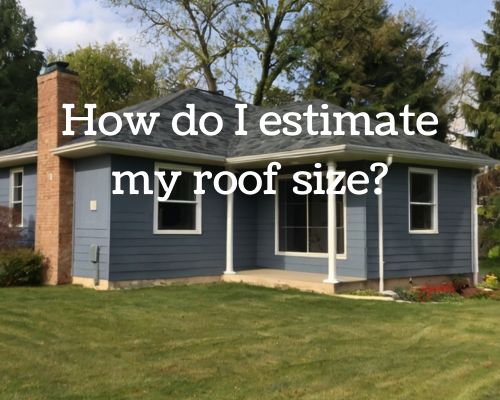Estimating the size of your roof is an important step in any roofing project.
Whether you are planning to repair or replace your roof, you need to know the size of the area that needs to be covered.
This will help you determine the amount of roofing materials you will need and the cost of the project.
With Charles Jimerson of Commercial Roofing NJ, we will guide you through the process of estimating your roof size.

To estimate your roof size, you need to measure the area of your roof.
This can be done by calculating the square footage of each section of your roof and adding them together.
You can use a roofing calculator or do the math yourself.
It is important to be as accurate as possible when measuring your roof. This ensures that you purchase the right amount of materials and avoid any unnecessary expenses.
The size of your roof can also affect the cost of your project.
The larger the roof, the more materials you will need, and the more labor will be required.
However, a larger roof may also mean a lower cost per square foot, as there are economies of scale in larger projects.
By accurately estimating the size of your roof, you can plan your project more effectively and avoid any surprises along the way.
Understanding Roof Dimensions and Calculations
When it comes to estimating your roof size, it’s important to understand the basic calculations involved.
This section will provide you with the knowledge you need to accurately measure your roof area, determine its pitch, and calculate the number of squares required for your roofing project.
Measuring Roof Area
To measure your roof area, you’ll need to determine the length and width of each section of your roof.
For a simple gable roof, this can be done by measuring the length and width of each section and multiplying them together to get the area of each plane.
If your roof has different sections or features, divide it into rectangles or triangles and find the area of each part individually.
To be as accurate as possible, it’s important to measure both the horizontal run and vertical rise of your roof.
You can then use the rise over run formula to determine your roof pitch and calculate the roof area accordingly.
Determining Roof Pitch
Roof pitch, also known as roof slope, is a measure of how steep your roof is.
It’s typically expressed as a ratio of the roof’s rise over its run. For example, a roof with a rise of 6 inches for every 12 inches of run would have a pitch of 6:12 or a 1:2 pitch.
Determining your roof pitch is important because it affects the amount of roofing material you’ll need.
You can use a roof pitch multiplier chart to determine the multiplier for your specific pitch. Then, you can use this multiplier to calculate the number of squares required for your roofing project.
Calculating Roof Squares
Roof squares are a unit of measurement used in the roofing industry to determine the amount of roofing material needed for a project.
One square is equal to 100 square feet of roofing area.
To calculate the number of squares required for your roofing project, divide the total roof area by 100.
For example, if your roof area is 1,500 square feet, you’ll need 15 squares of roofing material.
Factors Affecting Roof Size Estimation
When estimating the size of your roof, there are several factors to consider. These factors can affect the total cost of the project, as well as the amount of materials needed. Here are some of the most important factors to keep in mind:
Accounting for Roof Features
Roofs can have a variety of features that can affect the size and complexity of the project.
Skylights, chimneys, and dormers are just a few examples of features that can impact the calculations.
When measuring your roof, be sure to take these features into account and adjust your calculations accordingly.
Additionally, if your roof has any damage or needs repairs, these factors should also be taken into consideration.
Considering Roofing Materials
The type of roofing material you choose can also affect the size and cost of the project.
Asphalt shingles are a popular choice due to their affordability and ease of installation, but metal roofing and clay tiles can also be viable options.
Different materials require different amounts of materials and labor, which can significantly affect the overall cost of the project.
When estimating the size of your roof, be sure to take into account the type of material you plan to use.
Estimating Labor and Total Costs
In addition to materials, labor costs are another important factor to consider when estimating the size of your roof.
Labor costs can vary depending on your location, the complexity of the project, and the experience of the contractor.
Be sure to factor in both materials and labor costs when calculating the total cost of the project. This will give you a more accurate estimate of the total cost of the project.
Estimating the size of your roof requires careful calculations and consideration of several factors. By taking into account roof features, roofing materials, and labor costs, you can get a more accurate estimate of the total cost of your roofing project.
If you are unsure about any of these factors, it may be helpful to consult with a roofing contractor like Commercial Roofing NJ or use a roofing material calculator to get a more accurate estimate.